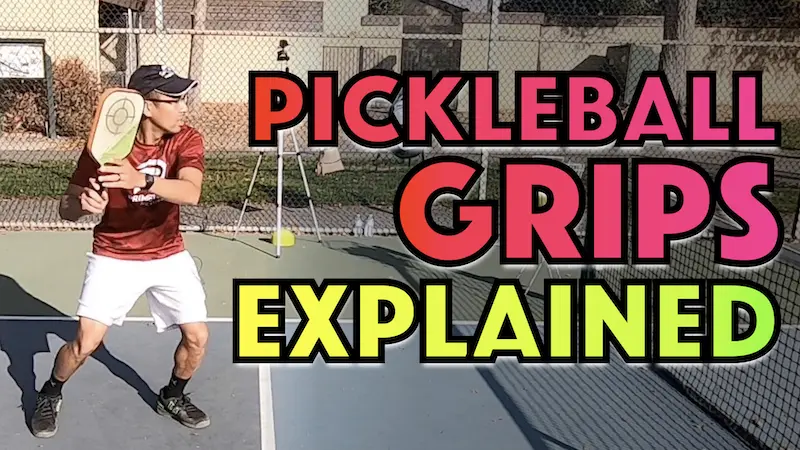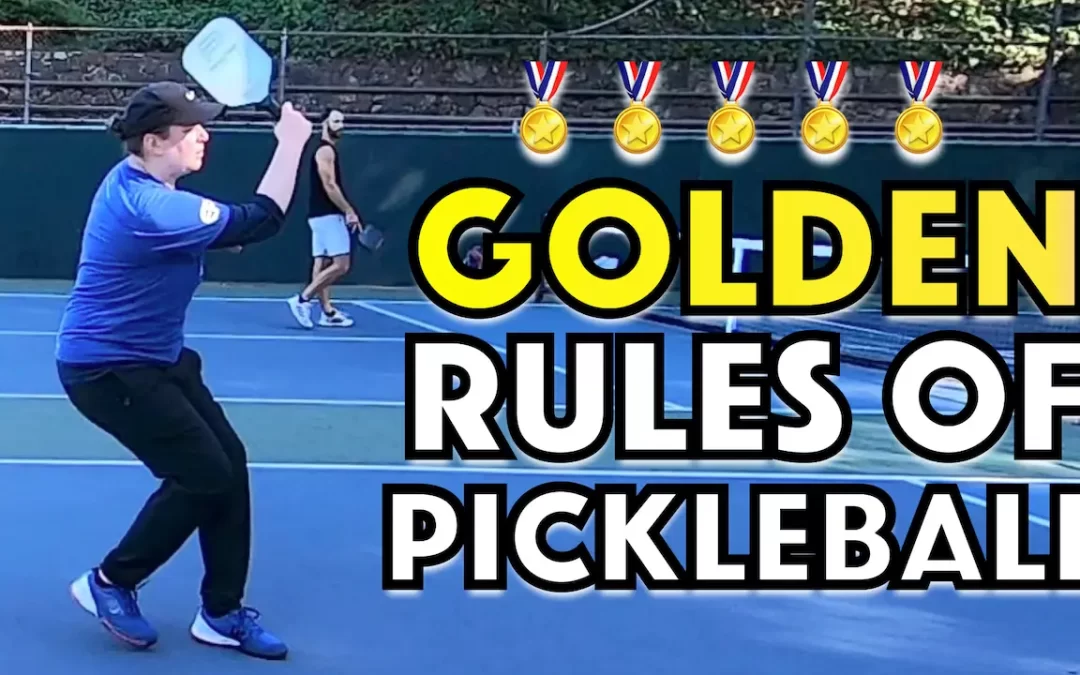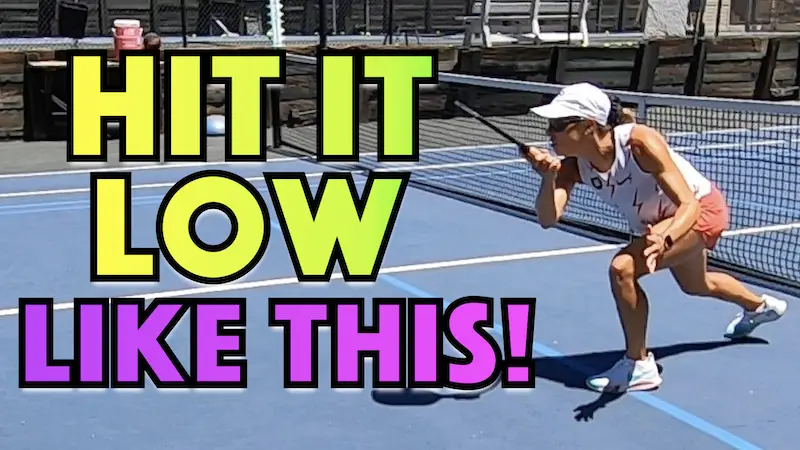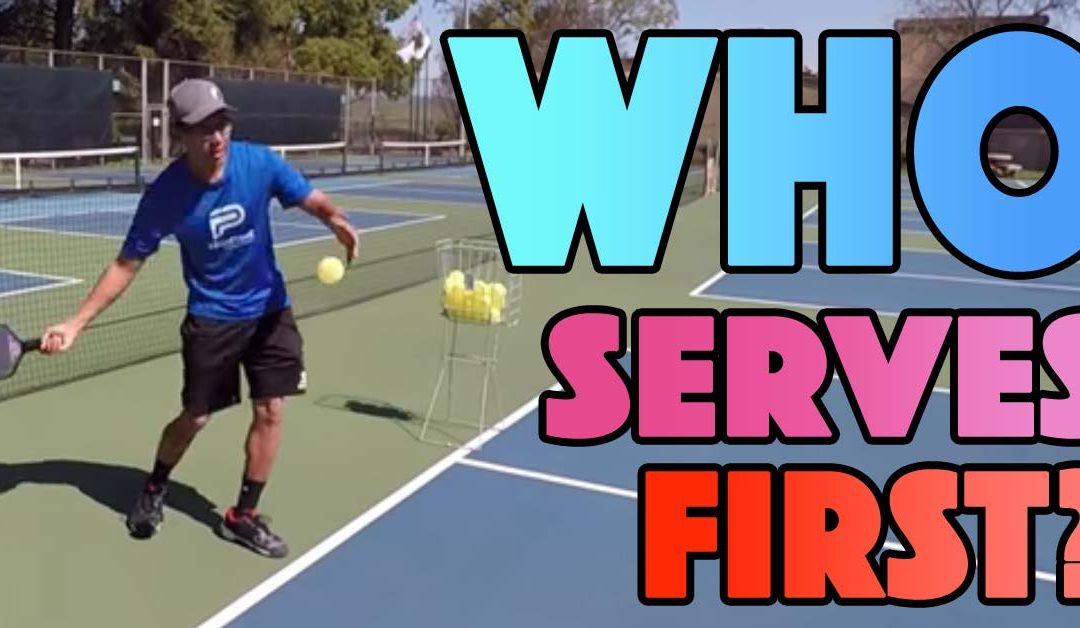In today’s blog we’re going to go over the top nine pickleball tips that we think can transform your game.
We really think these tips will help accelerate your game a lot quicker. Even if you don’t have a racket background, these tips can really help you out.
Tip # 1 – Use a Continental Grip
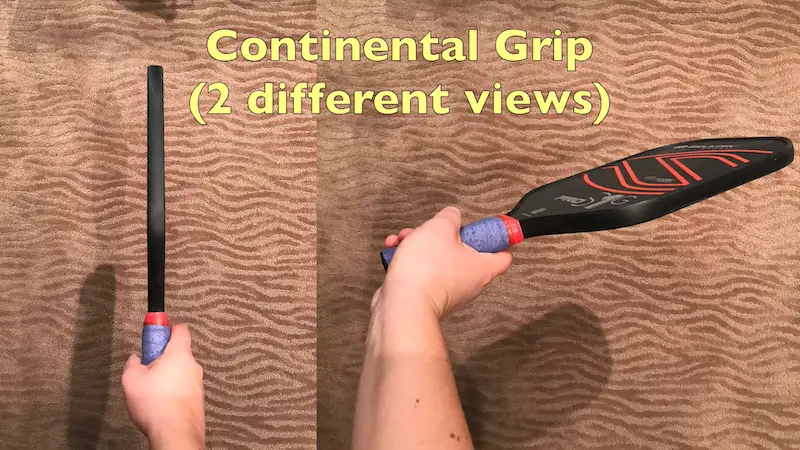
Tip number one is to use a continental grip. We really couldn’t stress this enough.
In the game of pickleball, unlike tennis, the court is a lot smaller and you have a lot less time to react especially if you’re at the non-volley zone.
We really recommend a continental grip because you can pretty much hit any shot that you need to.
You also don’t have a lot of time in between shots so having one universal grip that you can use up at the non-volley zone is very beneficial to you. So, try and get used to playing with that grip.
Tip # 2 – The Power Game is A-Ok
Tip number two is that the power game is a-okay.
If you like driving the ball or you have some sort of background where you like to hit the ball hard, there’s nothing wrong with that.
You might have been labeled as a banger but the the fact of the matter is that a key skill is speeding up the ball and hitting the ball hard. With that said, realize that you want to be able to do it at a high percentage.
So, if you are not making those drives at a high percentage rate then it’s probably not a good play for you.
When you drive the ball you really want to keep it low to the net and sometimes take a little bit of pace off of the ball trying to force your opponent to get a lower contact.
One other tip when you’re driving the ball is to really keep it away from your opponent’s torso. If you can make them stretch and reach to their forehand or to their backhand that’s a much better shot.
Lastly, along with having a power game, don’t neglect the soft game. This leads us to tip number three.
Tip #3 – Understand the Soft Game
Tip number three is to understand the soft game. Understand why it’s used and how to use it.
You can get away with constantly hitting hard and speeding up the ball at certain levels and against certain players but you will find out, as you move up into higher levels, that you’re going to have to develop a soft game as well. This mean hitting third shot drops, resets and neutral ball into your opponent’s non-volley zone.
This is a key element of pickle ball and you will need to learn it.
We like to see it as three different scenarios that you may find yourself in a pickle ball point.
You’re either:
1) Attacking
2) Defending
3) Neutral
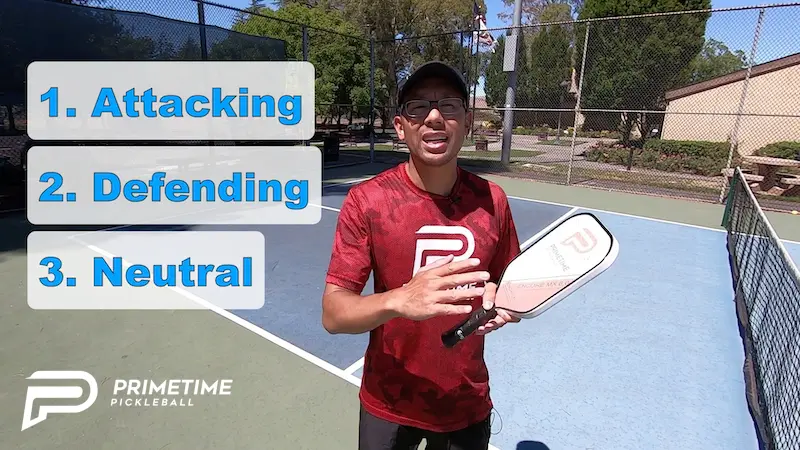
You’re going to want to be able to play a neutral shot.
This definitely doesn’t mean that dinks and hitting drops can’t be offensive or aggressive balls but there are going to be times that you’re going to have to play neutral soft shots just so that you can come in and make it up from that baseline to the non-volley zone.
Sometimes, if you get pulled back off the line and your opponents are attacking you, you are going to have to learn how to set those shots in so that you can get back up to the line with your partner.
You really want to understand the soft game.
Go watch a lot of pro matches and you’ll see that they are experts in hitting hard and hitting soft. They know when to pull the trigger and when to slow the game down.
Tip #4 – Attack Balls Down At Your Opponent Instead of Through Your Opponent
Tip number four is attack down and away. What we mean by this is that you don’t always want to attack right towards your opponent’s body because usually they have their paddle ready out in front.
If you can, you want to take your attacks and hit them low and more away from them so that you’re having them stretch or reach. It shouldn’t go right at their body.
You will see, at the highest levels of play, many players picking really good spots in locations when they’re attacking their opponent. They’re not always hitting the ball right at their opponents torso.
It could be really easy to have the torso as a target in the beginning when you start playing. It’s easy to get a high ball and try to hit your opponent right in the chest.
But, as you move up in levels, you’ll see how effective it is when you’re volleying the ball down, getting at their feet, or hitting away from their body.
Tip #5 – Have A Strong Paddle Ready Position Up At The NVZ Line
Tip number five is paddle position.
There are a lot of nuances for where to place your paddle or your ready position.
In this tip we really want to talk about when you’re up at the non-volley zone.
Generally there’s three different ways that people teach paddle position. Imagine here we are using a clock where 12 o’clock is in front of you. The positions are:
1) 12 o’clock – The paddle is directly in front of you
2) 9 o’clock – The paddle is in backhand mode and the paddle face is facing in front of you. Think of a 90 degree angle.
3) 10/11 o’clock – The paddle is in backhand mode similar to scenario 2 but your paddle is at more of a 45 degree angle.
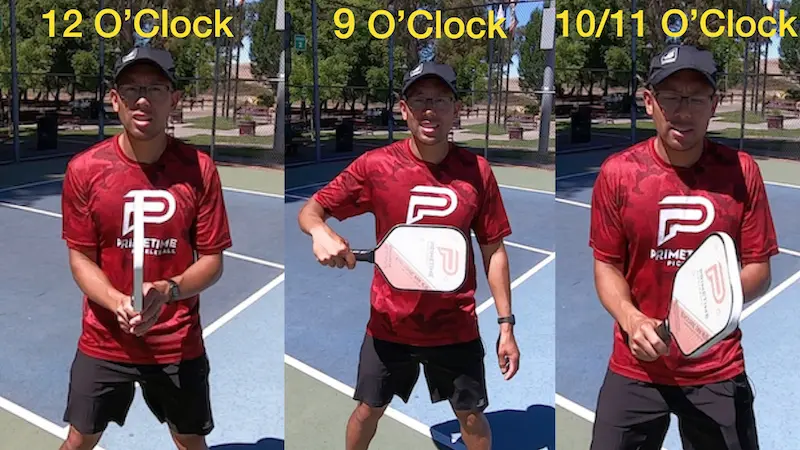
What we generally like to teach is to have your paddle position around or 10/11 o’clock.
The reason is that when you are playing pickleball, especially up at the non-volley zone line, you are going to hit the majority of your volleys and shots with your backhand. Especially on the defense.
When we’re talking about paddle position and ready position we’re really talking about playing high percentage. Since you are going to take most shots with a backhand due to the fact that you can block everything around your torso and low, it makes sense to favor the backhand slightly.
We don’t like players putting the paddle in a 9 o’clock position because if they get a high forehand or something on the side that they have to hit with their forehand, they have a long way to go to that side.
This is why why we would slightly favor it at the 10/11 o’clock position on the backhand just in case we need to defend.
Tip #6 – Practice Compact and Short Strokes
Tip number six is to have compact and short swings and strokes.
When you play the game of pickleball relative to tennis, everything is a lot faster and the court is smaller. The ball is going to come back at you at a faster and quicker rate. In all our strokes we really want to be compact.
Whether you’re hitting volleys or you’re hitting drives, everything that you’re hitting should be compact because you’ll have a short time to get back to ready position.
No matter what shot you hit that ball can be coming back to you a split second later.
Keep your swings short and compact so that when you are finishing your shot you could quickly get it back to ready position in case you need to defend very quickly.
Tip #7 – Always Be Ready for the Fast Ball
Tip number seven and that you should always be ready for the fastball or sped up ball.
In the game of pickleball no matter where your opponent’s at, what kind of body position they have, where they’re hitting the ball and even how low their contact is, we urge players to always be ready for a sped up ball.
Why is this?
Because you never know when they’re going to do it. If you’re always ready for a fastball, then they hit a slow or neutral ball, you’ll always be ready for that too.
You don’t want to be caught off guard.
You should always be looking for them to hit a faster ball or to speed up the ball so your mindset is always ready for that ball. This way you don’t get caught by surprise.
A little bonus tip here is to always be ready for that ball to come back.
There are numerous times players attack and think it’s a put away but because the other side is ready for it and the ball goes right back and surprises them. They end up losing the point. You really want to know that point is over and wait till that ball bounces on the court the second time no matter how good of a shot you think you hit.
Make sure that after you hit your shot you’re not admiring your shot or thinking it’s a put away.
The better and better players you play, they’re going to get to make more balls so every shot that you hit you need to be ready for that next ball until the point is really over.
Tip #8 – Let The Ball Comes to It’s Apex
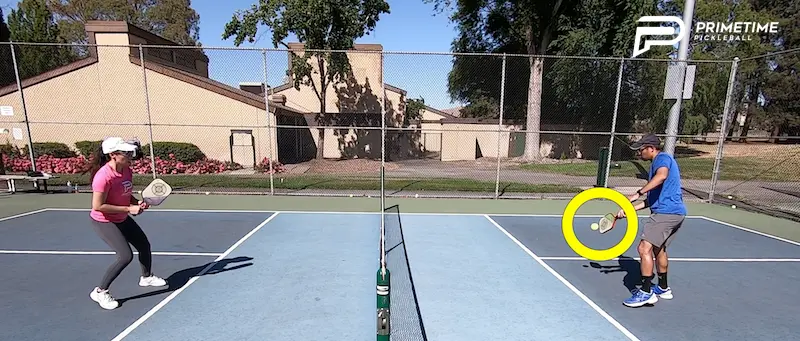
Tip number eight is to let the ball come to its apex.
When the incoming ball is coming your way, you really don’t have an advantage to hit that ball off the rise or right after it bounces. Let that ball come into you no matter what.
If it’s a return or if it’s a dink you want to let that ball come and bounce. You should let it bounce at its highest peak so that it gives you a higher contact point and it creates an easier ball to hit.
We see a lot of players trying to play balls right after the bounce and that actually makes it a lot harder to control.
Let the ball comes to it’s apex except if you are forced in to a defensive half volley.
Tip #9 – Be Patient
The ninth and final tip is to be patient.
You’ll see the top players in the world have these really long rallies.
Why is this?
Now this doesn’t happen every single point but what you’ll notice is that when the game gets really tight you will see the players be very strategic and be really patient on when they’re going to pull the trigger.
Let’s quickly imagine the game of chess. We know a lot of people like to compare pickleball to the game of chess and we think this is a really good comparison.
In the game of chess, when you start, are you assuming that this game is going to be over really quick? No. The game of chess is a long, drawn out, strategic game.
Moving pieces, trying to capitalize on your opponent’s holes and weaknesses, trying to put your opponent in check, putting pressure on them and eventually putting them in a position where you have a check mate.
We think the same can be said about pickleball. There’s the serve, the return and the third shot.
But, once all opponents are up at the net you really have to figure out the weaknesses of the players and create holes and gaps and really put pressure on them. So, we would call that putting them in check. Then, you’re trying to set up a high ball or a put away ball that you can end the point with which would be a checkmate.
This is why we like to view and compare pickleball to chess because there are a lot of moving pieces and moving parts.
There’s a lot of things that you’re going to have to adjust and shift as you play this game and you’re going to have to try to exploit their weaknesses so that you can capitalize on those things and then you can end up winning the point and winning the game.
These are our top nine pickleball tips that we really think can transform your game. If you really understand them and apply them, we think you can really raise your level of play a lot faster.


